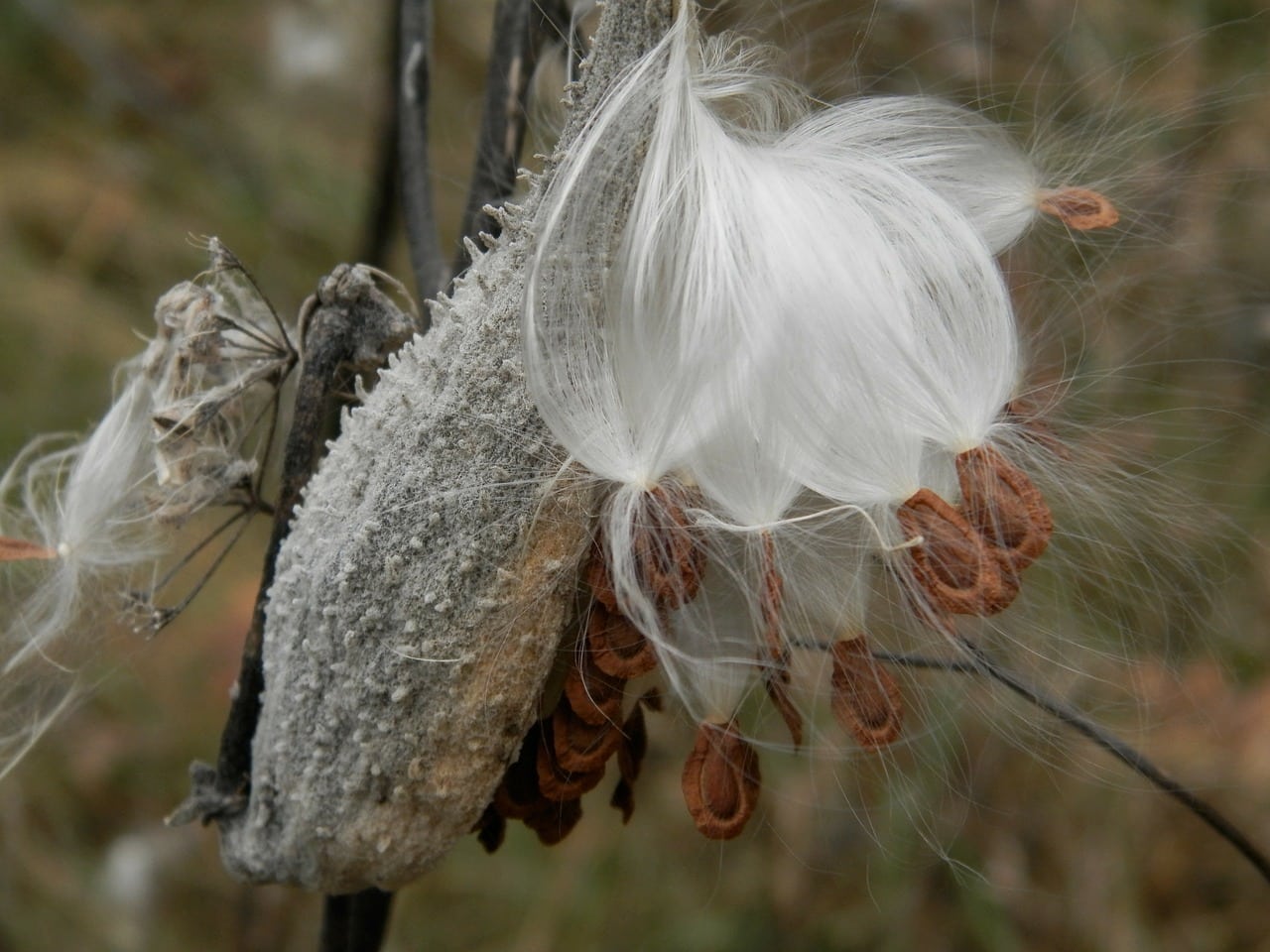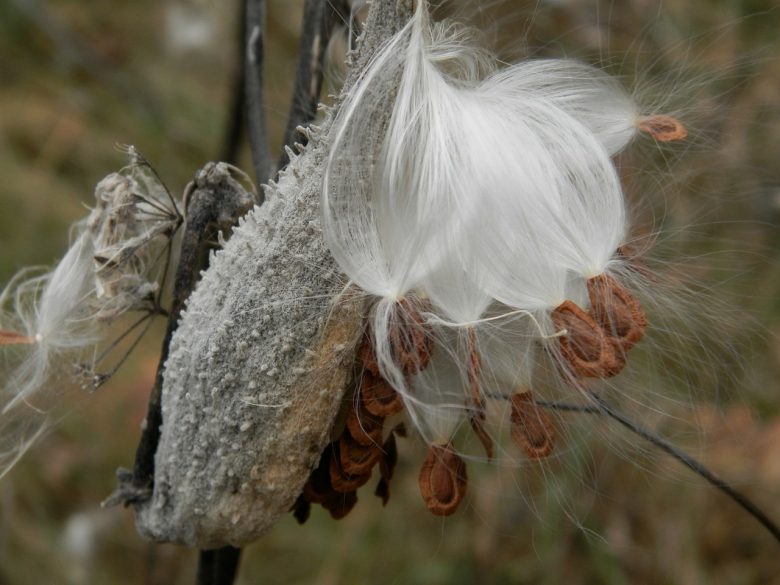How to Harvest and Dry Seeds
It’s time to gather this past summer’s seeds from your favorite flowers and veggies to save for next year’s garden crops. In this post, I’ll explain how to harvest and dry seeds from your garden and share which seeds are the easiest to harvest for great results year after year. Before harvesting seeds from your […]

Milkweed seeds and pods ready to harvest. Milkweed is a great plant for Butterfly gardens.
Photo Credit : Pixabay
Photo Credit : Pixabay
Instructions on How to Harvest Seeds:
- Prepare for seed harvesting by labeling small paper bags or manila envelopes with the name of the plant seeds you are harvesting and the date and color of the flower if applicable. Use sharp kitchen scissors for cutting pods.
- Look for seeds with dry and brown pods.
- Snip the entire pod into the paper bag or envelope and shake to loosen the seeds.
- Leave the bags/envelopes open and hang from a rafter in a dry area with good air circulation.
- Let the pods and seeds dry for a few weeks, occasionally checking the bags for mold and shaking the contents to aid in the drying process.
- If the seeds have not dried completely after a few weeks, spread them out on newspaper for another week before re-checking them.
- After the seeds have dried completely, remove all pods and debris and loosely re-package the seeds in a clean, labeled paper envelope and store in a dry place until planting time.
Top 5 Flower Seeds to Dry
- Nasturtium
- Pansy
- Marigold
- Foxglove
- Zinnia
Top 5 Vegetable Seeds to Dry
- Tomatoes
- Beans
- Squash
- Zucchini
- Watermelon
Shelley Wigglesworth
Shelley (Fleming) Wigglesworth is an award-winning freelance journalist from Maine and a certified Maine Master Gardener who writes gardening articles on a regular basis for NewEngland.com. Her work can be found in the following publications: The Village Magazine, York County Coast Star, Yankee Magazine (online), National Fisherman Magazine, Commercial Fisheries News, Points East Magazine, Coastal Angler Magazine and The Maine Lobstermen's Association's "Landings."
More by Shelley Wigglesworth

